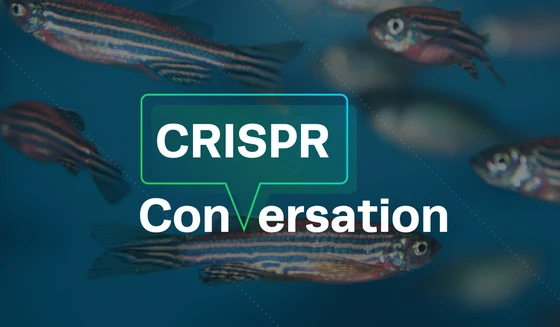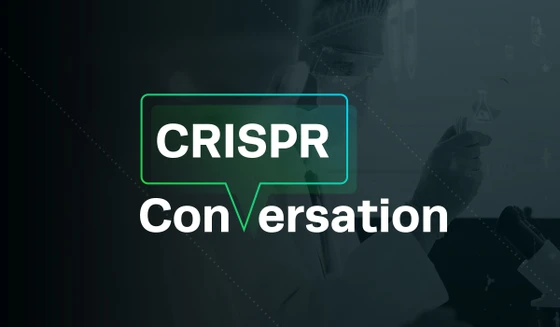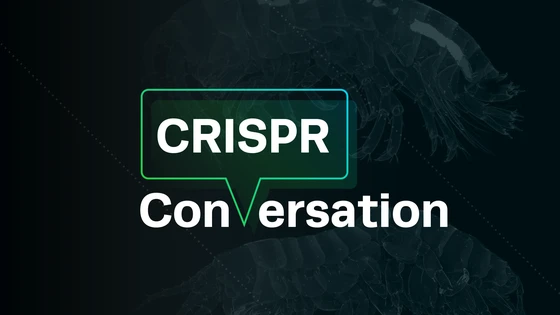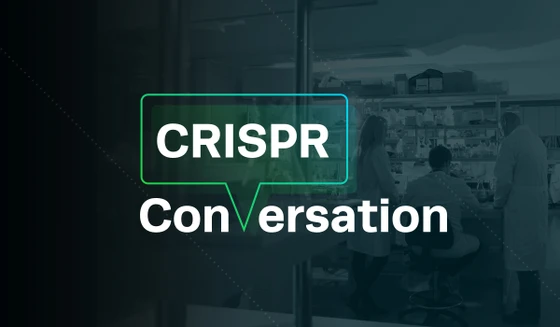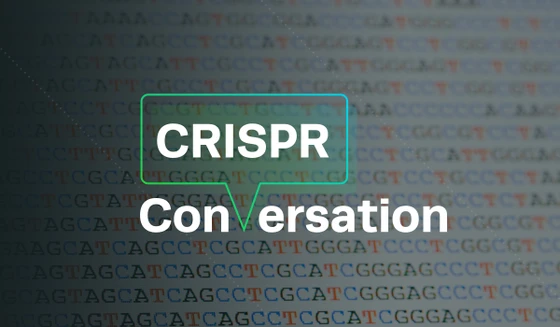CRISPR Conversations are our way of highlighting the amazing work being done by CRISPR researchers worldwide. We select scientists to cover based on the overall impact of their work using CRISPR for new applications that are moving their field forward.
This week we caught up with Dr. Miguel Moreno-Mateos, a postdoctoral researcher and CRISPR expert at Yale University. His current project involves using CRISPR genome engineering to understand early zebrafish development. Dr. Moreno-Mateos will soon start his own lab in Seville, Spain.
Optimizing CRISPR Gene Editing in Zebrafish
We often hear that CRISPR works in every species it has been tested in so far. That’s true, but different CRISPR systems and different model organisms require optimization to achieve the best editing results. This is particularly true for ectothermic vertebrates such as zebrafish. Because the zebrafish body temperature is often very different than mammals or bacteria, the CRISPR enzymes will work differently.
One interesting finding that Dr. Miguel Moreno-Mateos recently published in Nature Communications is that temperature modulates the activity of the CRISPR-associated protein Cpf1. This is not completely surprising, most enzymes have an optimal temperature, but it highlights the need to optimize the assay conditions when using CRISPR in different experimental systems. He was also able to exploit the differences in the Cpf1 enzyme from different species to achieve better control over the results of his CRISPR experiments.
Dr. Moreno-Mateos also found that it was important to use the highest quality CRISPR guide RNA to achieve the highest editing efficiency. He has compared modified synthetic sgRNA from Synthego to guide RNA generated by in vitro transcription and found that Synthego’s synthetic sgRNAs were more active.
"If we want to do something very tricky or need really high efficiency for an important experiment, I think the synthetic guides that you guys provide are amazing,” said Dr. Moreno-Mateos. "
"The guides are super pure and the quality is really good! I have achieved a higher level of activity using Synthego sgRNAs in comparison with the IVT generated guides. The accuracy for quantification is better too. I would really recommend them"
Getting to Know Dr. Miguel Moreno-Mateos and His Approach to Engineering Zebrafish Genomes
Kevin Holden: Hi Miguel, could you tell us a little bit about your research?Miguel Moreno-Mateos: I am a postdoctoral researcher in Antonio Giraldez’s lab at Yale University. Over the last four years, I have been optimizing CRISPR technology for in vivo applications using the zebrafish as a model. We first optimized CRISPR-Cas9 for developing an algorithm to predict targeting efficiency. Then, we moved on to medium-scale genetic analyses to screen for genes that are potentially involved in brain development in vertebrates. We got some interesting candidates from those experiments, so we are submitting a paper about that too.
Then I moved to a new genome engineering system, using the Cpf1 nuclease, and optimized it in the zebrafish. It was interesting to see how temperature controlled the efficiency of CRISPR both in vitro and in vivo. This was actually striking because so far the CRISPR system worked robustly only in mammalian cells and mice. We have now been able to uncover that temperature is a key factor controlling the activity of Cpf1 nuclease from our experiments using AsCpf1 (derived from Acidaminococcus sp BV3L6) and LbCpf1 (derived from Lachnospiraceae bacterium) nucleases. We also observed that LbCpf1 is more heat-stable. Our optimizations have established a reliable system that would work beyond mammalian models.
Miguel Moreno-Mateos: I am a postdoctoral researcher in Antonio Giraldez’s lab at Yale University. Over the last four years, I have been optimizing CRISPR technology for in vivo applications using the zebrafish as a model. We first optimized CRISPR-Cas9 for developing an algorithm to predict targeting efficiency. Then, we moved on to medium-scale genetic analyses to screen for genes that are potentially involved in brain development in vertebrates. We got some interesting candidates from those experiments, so we are submitting a paper about that too.
Then I moved to a new genome engineering system, using the Cpf1 nuclease, and optimized it in the zebrafish. It was interesting to see how temperature controlled the efficiency of CRISPR both in vitro and in vivo. This was actually striking because so far the CRISPR system worked robustly only in mammalian cells and mice. We have now been able to uncover that temperature is a key factor controlling the activity of Cpf1 nuclease from our experiments using AsCpf1 (derived from Acidaminococcus sp BV3L6) and LbCpf1 (derived from Lachnospiraceae bacterium) nucleases. We also observed that LbCpf1 is more heat-stable. Our optimizations have established a reliable system that would work beyond mammalian models.
KH: Would you say you are a bigger fan of the LbCpf1 than the AsCpf1 system?MM: I think both proteins have interesting aspects to be explored. On the one hand, LbCpf1 is similar to the Cas9 nuclease for ectothermic organisms. It is pretty stable at different temperatures. AsCpf1, which is much more affected by temperature, can be used as an inducible system in vivo. This means we can play with the temperature and shoot down the activity of the protein to study specific phases during the development, for instance.
MM: I think both proteins have interesting aspects to be explored. On the one hand, LbCpf1 is similar to the Cas9 nuclease for ectothermic organisms. It is pretty stable at different temperatures. AsCpf1, which is much more affected by temperature, can be used as an inducible system in vivo. This means we can play with the temperature and shoot down the activity of the protein to study specific phases during the development, for instance.
KH: That’s great! Could you tell us about your research institute at Yale University, and about the lab where you work?MM: My lab is an amazing place to do science. My PI, Antonio Geraldez, is a highly motivated person and always pushes for interesting projects!
Everyone in the lab, in general, is interested in uncovering the regulatory code driving the maternal to zygotic transition. One of the questions that we want to address is how the genome is activated after fertilization and how the material from the mother is degraded. Over the years, researchers in our lab have uncovered many interesting things using CRISPR-based approaches.
MM: My lab is an amazing place to do science. My PI, Antonio Geraldez, is a highly motivated person and always pushes for interesting projects!
Everyone in the lab, in general, is interested in uncovering the regulatory code driving the maternal to zygotic transition. One of the questions that we want to address is how the genome is activated after fertilization and how the material from the mother is degraded. Over the years, researchers in our lab have uncovered many interesting things using CRISPR-based approaches.
KH: What are you planning to work on after you leave Yale University?MM: I am planning to go back to Seville, Spain. In the near future, I am going to work on recapitulating the mutations that we can find in patients with retinitis pigmentosa, and then use the zebrafish as a model for understanding the molecular mechanisms driving those diseases.
MM: I am planning to go back to Seville, Spain. In the near future, I am going to work on recapitulating the mutations that we can find in patients with retinitis pigmentosa, and then use the zebrafish as a model for understanding the molecular mechanisms driving those diseases.
KH: I believe you guys also have a connection with Jennifer Doudna. Could you just maybe briefly tell us about your interactions with her?MM: When we started working with Cpf1, we first tried to get the system to work by injecting the messenger RNA coding for those proteins into zebrafish. When we didn't see any mutations using this approach, we figured that it was because the guide RNA was degraded over the time after injection. One way to actually protect the guide RNA from degradation was to make our RNPs in vitro and then inject these.
For this reason we collaborated with Jennifer Doudna’s group at UC Berkeley; they provided us the protein and also gave a lot of useful feedback.
MM: When we started working with Cpf1, we first tried to get the system to work by injecting the messenger RNA coding for those proteins into zebrafish. When we didn't see any mutations using this approach, we figured that it was because the guide RNA was degraded over the time after injection. One way to actually protect the guide RNA from degradation was to make our RNPs in vitro and then inject these.
For this reason we collaborated with Jennifer Doudna’s group at UC Berkeley; they provided us the protein and also gave a lot of useful feedback.
KH: Did you use CRISPR before you started working in the Giraldez lab?MM: No. I arrived in March 2013, just after those famous papers came out in February. One day, Antonio said to me, "take a look at this CRISPR thing and see if this works in zebrafish." And here I am.
MM: No. I arrived in March 2013, just after those famous papers came out in February. One day, Antonio said to me, "take a look at this CRISPR thing and see if this works in zebrafish." And here I am.
KH: When you first started doing CRISPR, how did you make your guide RNAs?MM: We started out generating guide RNAs by in vitro transcription. In the zebrafish, we now use the synthetic sgRNAs that you provide and they work very well.
MM: We started out generating guide RNAs by in vitro transcription. In the zebrafish, we now use the synthetic sgRNAs that you provide and they work very well.
KH: When did you first hear about Synthego?MM: It was at a Cold Spring Harbor meeting in the past year, I think, when we discussed the possibility of collaboration.
MM: It was at a Cold Spring Harbor meeting in the past year, I think, when we discussed the possibility of collaboration.
KH: How has using synthetic guides affected your CRISPR workflow?MM: If we want to do something very tricky or need really high efficiency for an important experiment, I think the synthetic guides that you guys provide are amazing.
The guides are super pure and the quality is really good! I have achieved a higher level of activity using Synthego sgRNAs in comparison with the IVT generated guides. The accuracy for quantification is better too. I would really recommend these.
MM: If we want to do something very tricky or need really high efficiency for an important experiment, I think the synthetic guides that you guys provide are amazing.
The guides are super pure and the quality is really good! I have achieved a higher level of activity using Synthego sgRNAs in comparison with the IVT generated guides. The accuracy for quantification is better too. I would really recommend these.
KH: Lastly, what is your favorite thing about Synthego?MM: Honestly, I like Synthego because it is a modern, pragmatic company. Any time that I have had a problem, you guys have been very helpful and solved it. That’s what you ideally want when you collaborate with a company, so that’s good!
MM: Honestly, I like Synthego because it is a modern, pragmatic company. Any time that I have had a problem, you guys have been very helpful and solved it. That’s what you ideally want when you collaborate with a company, so that’s good!
For more great genome engineering content, check out CRISPR Cuts, the new podcast from Synthego.
